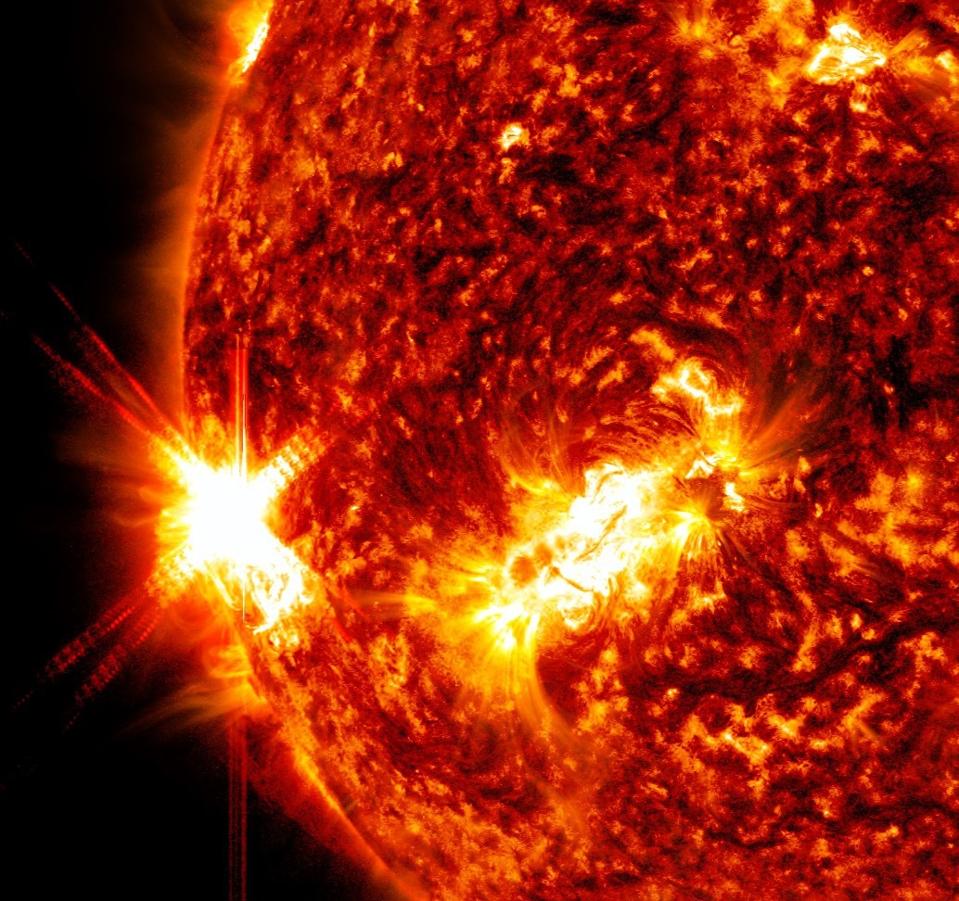Don’t QRT Yet!
What Every Ham Should Do Right After a Solar Flare
The counterintuitive truth about solar flares and HF propagation
If you’ve been on the air when a solar flare hits, you know the drill: sudden bursts of noise, bizarre buzzing sounds sweeping across your frequency, and signals that seem to vanish into thin air. Your first instinct might be to shut down the rig and wait it out. Don’t.
Here’s why that knee-jerk reaction could cause you to miss some of the best propagation conditions you’ll see all cycle.
The Solar Flare Timeline: What Really Happens
When a major solar flare erupts, it’s like a nuclear detonation on the sun’s surface. The energy release sends multiple forms of radiation hurtling toward Earth at the speed of light. Within minutes, amateur radio operators worldwide start experiencing the chaos:
- Type III bursts – those characteristic buzzing sounds that drift down in frequency like a fast-running engine
- Sudden QSB as signal paths become unstable
- Continuum noise blanketing entire frequency ranges
- In extreme cases, a complete HF blackout that can last up to an hour
But here’s the critical part most hams don’t understand: this initial disruption is temporary and is followed by significantly enhanced propagation.
How about a 30-Minute Rule?
If the HF effects from solar flares are “generally only for the duration of the flare event (20-60 minutes)” and rarely affect frequencies below 10 MHz, then wait it out. You got 30 min.
After approximately 30 minutes following the flare, HF noise levels and propagation return to normal – but with a crucial difference. The X-rays from the solar flare provide extra ionization to the E and F layers, creating:
- Improved reflectivity for better signal-to-noise ratios
- Higher Maximum Usable Frequency (MUF) opening bands that may have been closed
- Enhanced propagation conditions that can last until sundown
- Excellent nighttime conditions on 80 and 40 meters
The Contest Operator’s Secret
For contest stations, this insight is priceless: when a major flare knocks out HF, the blackout almost never lasts more than an hour so take a short break, but keep calling!
Smart contest operators use this time to:
- Check equipment and antennas
- Plan frequency strategies for the enhanced propagation window
- Monitor for the return of normal conditions
- Prepare for the upcoming excellent DX opportunities
The QRP Advantage
Low-power operators particularly benefit from post-flare conditions. The improved signal-to-noise ratio means your modest 5-watt signal can compete with the big guns during this enhanced propagation window. The research specifically identifies this as an “excellent window for QRPers, right after the flare.”
What You Should Actually Do
When you detect a solar flare in progress:
1. Stay Calm and Monitor (0-30 minutes)
- Don’t immediately shut down
- Note the characteristics of the interference
- Monitor for the cessation of Type III bursts and continuum noise
2. Prepare for Enhanced Operations (30+ minutes)
- Check higher bands that may have opened due to increased MUF
- Prepare for excellent DX opportunities
- Alert your local club or contest team about the incoming good conditions
3. Exploit the Window (Post-flare until sundown)
- Work those higher frequency bands while they’re enhanced
- Take advantage of the improved signal-to-noise ratios
- Make those DX contacts you’ve been trying for
4. Prepare for Round Two (2-3 days later)
- Remember that the geomagnetic storm typically arrives 2-3 days after the flare
- When that storm subsides, you’ll get another excellent propagation window
The Bigger Picture
Understanding solar flare effects separates experienced operators from newcomers. While others are shutting down their rigs in frustration, knowledgeable hams are positioning themselves for some of the best operating conditions of the solar cycle.
The key insight from the research is clear: “Good DX contacts are possible immediately following a solar flare until sundown due to the improved reflectivity and higher MUF opening the higher bands – especially during solar minimum years.”
Bottom Line
The next time you hear those characteristic solar flare sounds sweeping across your receiver, resist the urge to QRT. Instead, grab a cup of coffee, check your antennas, and prepare for what could be an outstanding operating session.
The sun may be 93 million miles away, but when it sends us enhanced propagation conditions, we should say “thank you” and make the most of them.
Want to stay ahead of solar activity and its effects on HF propagation? Monitor real-time space weather conditions and get amateur radio-specific intelligence at SolarCdx.com.
73,
W2ADX

